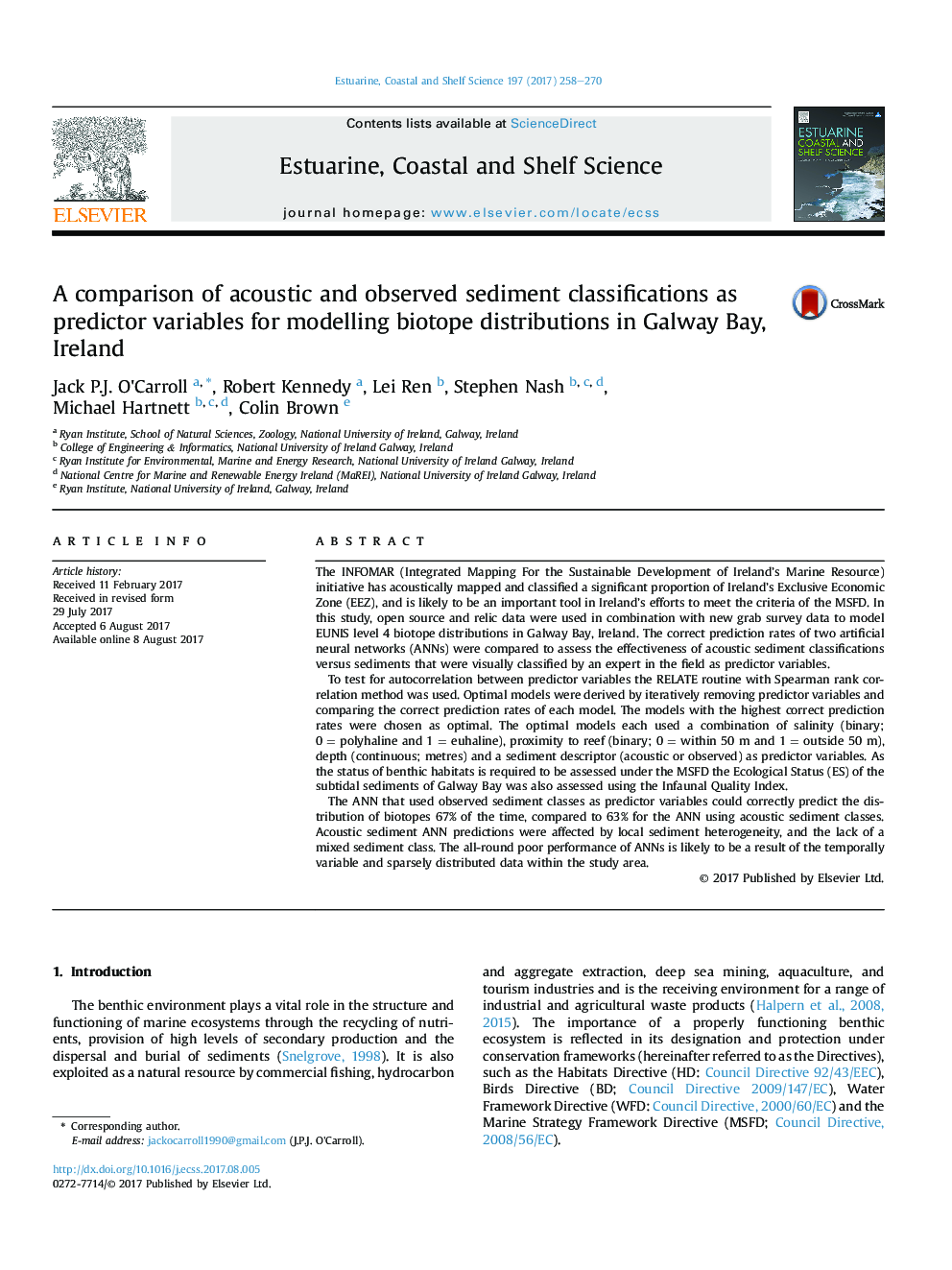| Article ID | Journal | Published Year | Pages | File Type |
|---|---|---|---|---|
| 5765075 | Estuarine, Coastal and Shelf Science | 2017 | 13 Pages |
â¢The effectiveness of acoustic and observed sediment classifications as predictor variables was assessed.â¢A majority of open source and relic data was supplemented with some new data to build models which made predictions on EUNIS level 4 biotopes.â¢The observed sediment model produced a correct prediction rate of 67% versus 64% for the acoustic sediment model.â¢Spatially fragmented data, significant variance in sampling times, equipment, operators and protocols had an effect on model performances.
The INFOMAR (Integrated Mapping For the Sustainable Development of Ireland's Marine Resource) initiative has acoustically mapped and classified a significant proportion of Ireland's Exclusive Economic Zone (EEZ), and is likely to be an important tool in Ireland's efforts to meet the criteria of the MSFD. In this study, open source and relic data were used in combination with new grab survey data to model EUNIS level 4 biotope distributions in Galway Bay, Ireland. The correct prediction rates of two artificial neural networks (ANNs) were compared to assess the effectiveness of acoustic sediment classifications versus sediments that were visually classified by an expert in the field as predictor variables.To test for autocorrelation between predictor variables the RELATE routine with Spearman rank correlation method was used. Optimal models were derived by iteratively removing predictor variables and comparing the correct prediction rates of each model. The models with the highest correct prediction rates were chosen as optimal. The optimal models each used a combination of salinity (binary; 0Â =Â polyhaline and 1Â =Â euhaline), proximity to reef (binary; 0Â =Â within 50Â m and 1Â =Â outside 50Â m), depth (continuous; metres) and a sediment descriptor (acoustic or observed) as predictor variables. As the status of benthic habitats is required to be assessed under the MSFD the Ecological Status (ES) of the subtidal sediments of Galway Bay was also assessed using the Infaunal Quality Index.The ANN that used observed sediment classes as predictor variables could correctly predict the distribution of biotopes 67% of the time, compared to 63% for the ANN using acoustic sediment classes. Acoustic sediment ANN predictions were affected by local sediment heterogeneity, and the lack of a mixed sediment class. The all-round poor performance of ANNs is likely to be a result of the temporally variable and sparsely distributed data within the study area.
